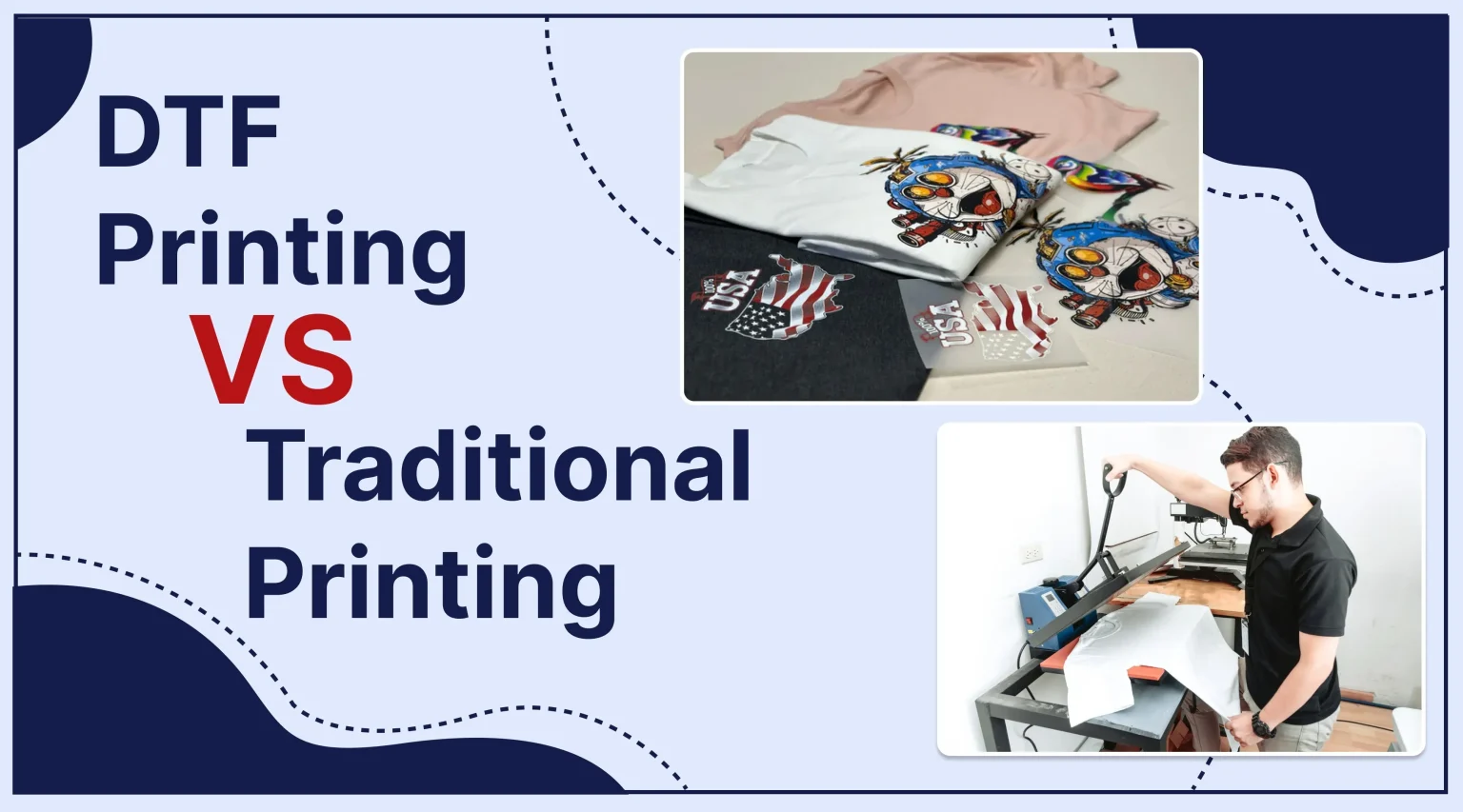In the evolving landscape of custom apparel printing, the debate of DTF transfers vs traditional printing has become increasingly relevant for businesses seeking efficient and high-quality solutions. Both DTF printing and conventional methods like screen printing and direct-to-garment (DTG) printing carry distinct advantages that cater to a variety of production requirements and budget constraints. While traditional printing methods have stood the test of time, DTF transfers are emerging as a powerful alternative, thanks to their vibrant color reproduction and remarkable durability. As companies strive for excellence in custom apparel printing, understanding the differences between DTF transfers and traditional methods can significantly impact their success. This article delves into the strengths and weaknesses of both DTF and traditional printing, guiding businesses towards the best choice for their needs.
When exploring the printing world, understanding the distinctions between direct-to-film (DTF) transfers and older printing techniques is crucial. Traditional printing encompasses methods like screen printing and direct-to-garment (DTG) techniques, which have long been favored for their established processes and high output capabilities. In contrast, DTF technology has gained momentum as a modern approach known for delivering intricate designs and vibrant colors with less setup time. As the market for custom apparel evolves, businesses are exploring how these two categories of printing can serve different segments of their production needs. This examination of DTF strategies against conventional printing practices is essential for any company looking to elevate its customization offerings.
What Makes DTF Printing Stand Out?
DTF printing, or Direct-To-Film printing, offers a revolutionary approach in the realm of custom apparel printing. This method allows for high-resolution images, including intricate designs and vibrant colors, to be printed directly onto a transfer film. This film can then be applied to various fabrics, from cotton to polyester blends, making it a versatile choice for many businesses. The ability to achieve photographic quality with relative ease is a major highlight, as it empowers designers to push creative boundaries and deliver unique products that resonate with consumers.
In addition to its visual appeal, DTF printing is known for its durability. The prints produced by this technology are typically resilient, resisting fading and cracking through multiple washes. This quality not only enhances the longevity of the apparel but also adds value for customers who seek products that stand the test of time. Furthermore, the lower startup costs associated with DTF equipment make it an attractive option for small to medium-sized businesses aiming to minimize their initial investment.
Frequently Asked Questions
What are the main differences between DTF transfers and traditional printing methods?
DTF transfers utilize a special film to print designs that are then heat pressed onto fabrics, offering vibrant colors and durability. In contrast, traditional printing methods like screen printing and DTG have established processes, with screen printing being cost-effective for large runs and DTG providing similar quality but mainly for cotton fabrics. Each method serves different business needs based on scale and design complexity.
How does DTF printing compare to screen printing?
Screen printing excels in producing high volumes of simple designs at lower costs per unit but requires significant setup time and costs, especially for multi-colored designs. In contrast, DTF printing is more adaptable, allowing for intricate designs with vibrant colors without extensive setup, making it ideal for small batch productions.
Is DTF printing more cost-effective than traditional printing methods?
Yes, DTF printing tends to be more cost-effective for small batch orders due to lower initial investment and inexpensive consumables. For larger orders, traditional methods like screen printing may offer better long-term cost efficiency owing to reduced costs per unit from spreading setup costs over more products.
What types of materials can DTF transfers be used on compared to traditional printing methods?
DTF transfers can be applied to a variety of materials, including cotton, polyester, and blends, making them versatile for different applications. Traditional printing methods, while effective, often have limitations; for example, DTG is primarily effective on cotton fabrics, while screen printing works best on specific materials depending on the ink used.
Which printing method offers better durability, DTF transfers or traditional printing?
DTF transfers typically demonstrate greater durability and resistance to fading, allowing intricate designs to maintain quality over many washes. Traditional printing methods also provide lasting quality but may suffer from fading or cracking when lower quality materials are used, especially in screen prints.
What trends are influencing the shift towards DTF printing in the apparel industry?
Emerging trends such as an increase in consumer demand for personalized merchandise and a focus on sustainability are driving the shift towards DTF printing. This method supports on-demand production, reducing waste and aligning with environmentally friendly practices, making it appealing to modern businesses.
| Factor | DTF Transfers | Traditional Printing |
|---|---|---|
| Color Quality | Vibrant and intricate designs | Good for simple designs, may fade over time with lower quality inks |
| Material Compatibility | Works on various fabrics: cotton, polyester, blends | Primarily on cotton, limited versatility |
| Durability | High durability, resistant to fading | Durable but can fade or crack if not cared for properly |
| Cost-Effectiveness | Lower initial costs, efficient for small batches | More economical for large volumes due to setup costs |
| Production Speed | Faster turnaround for small orders | Slower production, better for larger batches |
Summary
In the dynamic landscape of custom apparel printing, the choice between DTF transfers and traditional printing methods is pivotal for businesses aiming to optimize their operations. DTF transfers vs traditional printing offers vivid colors, versatile material compatibility, and cost-efficiency for smaller batches, making it an appealing option in today’s personalized market. On the other hand, traditional methods like screen printing excel in larger runs, thus providing a robust cost advantage. Ultimately, understanding these distinctions equips businesses to tailor their printing approach effectively, aligning with their specific needs and market demands.




